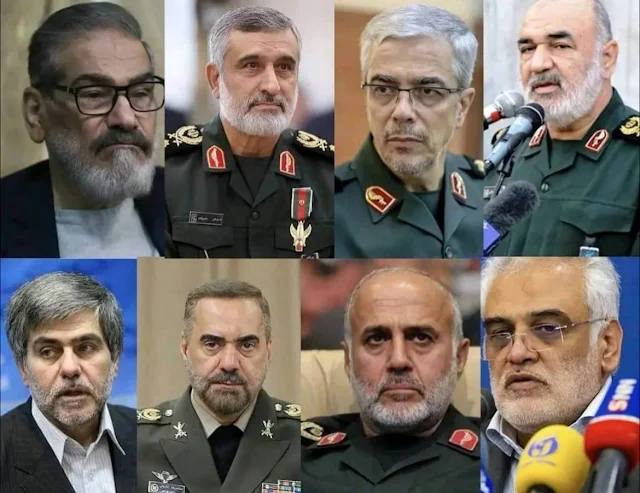Introduction
In mid‑June 2025, Israel launched Operation Rising Lion, an air-and-sabotage campaign targeting Iran’s nuclear sites, military infrastructure, and high-ranking commanders. With over 200 aircraft and covert Mossad operations deep inside Iran, this marks one of the most aggressive Israeli actions since the Iran‑Iraq War . As the dust settles, the region faces critical questions: How will Iran respond? What are the implications for global oil markets, diplomacy, and wider Middle Eastern stability?
1. What Happened in the Strike?
- Covert groundwork: Months of covert Mossad activity involved planting missiles and drones, enabling precision strikes from within Iranian territory .
- Major targets: The attack reportedly destroyed radars, surface-to-air missile systems, missile launchers, and key nuclear facilities—including Iran’s Natanz enrichment site .
- High-value casualties: Senior commanders slain include IRGC chief Hossein Salami, Chief of Armed Forces Staff Mohammad Bagheri, and aerospace chief Amir Ali Hajizadeh, along with several nuclear scientists.
2. Iran’s Strong Response and Strategic Patience
- “Declaration of war”: Iran’s leaders have condemned the strike as a “declaration of war,” with Ayatollah Khamenei warning of “severe punishment” and President Pezeshkian promising retaliation .
- Drone counterattack: Iran reportedly launched over 100 drones toward Israel; nearly all were intercepted by the IDF .
- Silent strategy? Some analysts suggest Iran might adopt “strategic patience” rather than immediate counterstrikes, possibly preserving its missile capabilities by preemptively disabling them .
3. Regional and Global Repercussions
- Oil markets under pressure: Brent crude surged 6–8% as markets reacted to fears of broader Middle Eastern disruption .
- Sky disruptions: Airspace closures in Iran, Israel, Jordan, Iraq, Emirates, and elsewhere caused flight cancellations, rerouting, and disrupted global traffic .
- Diplomatic alarm: A UN Security Council emergency meeting was convened. The US, UK, France, and regional leaders urged calm; Macron urged “maximum restraint” .
4. What Iran Might Do Next
- Calibrated retaliation: Expect limited missile or drone strikes—not a full-scale invasion—to send a message without risking all-out war.
- Proxy mobilization: Iran may leverage allied proxies like Hezbollah or Houthi forces to target Israeli or Western interests in the region.
- Diplomatic pressure: Iran could ramp up efforts in international forums, pushing for sanctions or legal actions through the UN or IAEA.
- Nuclear escalation: If Iran accelerates its enrichment or resumes nuclear research, it may undermine ongoing diplomatic avenues .
5. Implications for U.S. and Nuclear Diplomacy
- Shaken nuclear talks: Ongoing U.S.-Iran negotiations in Oman are now in jeopardy, with Trump calling it a “second chance” for Iran to negotiate—though military escalation complicates diplomacy .
- U.S. support vs involvement: Washington denies direct involvement but reportedly shared “exquisite” intelligence and is helping defend Israeli airspace .
6. What Comes After: Multiple Scenarios
|
Scenario |
Description |
Impact |
|
1. Limited response |
Iran avoids full-scale war, limits attacks to symbolic strikes |
Tensions remain high, but no broader war |
|
2. Proxy conflicts |
Hezbollah, Houthis, or militias open fronts |
Israel and U.S. may respond outside Iran |
|
3. Broader war |
Direct mobilization of regional forces |
Catastrophic escalation |
|
4. Negotiated calm |
Diplomatic intervention halts further strikes |
Possible nuclear deal resumed |
Conclusion
Israel’s Operation Rising Lion constitutes a dramatic escalation in the centuries-old Israel–Iran standoff, combining overt airstrikes with covert sabotage. The death toll—dozens of military and nuclear officials—and damage to nuclear infrastructure signal a decisive strike toward neutralizing Tehran’s capabilities. Iran faces a challenging decision: immediate retaliation could spiral into broader conflict, whereas restraint might preserve its assets while still projecting strength. Meanwhile, diplomatic efforts are strained, energy markets are jittery, and regional actors remain on high alert.
The coming days and weeks will determine whether this becomes a temporary crisis or the spark for a wider conflagration.
Keywords: Operation Rising Lion, Israel Iran strike, Iran retaliation, Middle East conflict, Natanz nuclear, Hossein Salami killed, Israel Mossad attack, oil price surge
Sources:
Al Jazeera, Reuters, The Guardian, Washington Post, Times of India, Economic Times, CBS News, Wikipedia (June 2025 Israeli strikes on Iran)


Comments
Post a Comment
Hi, Thanks for your comment :)